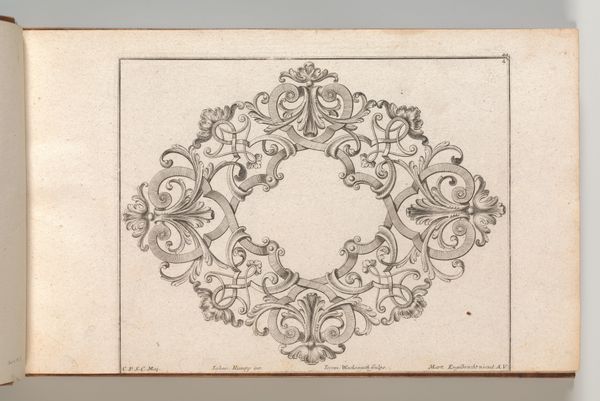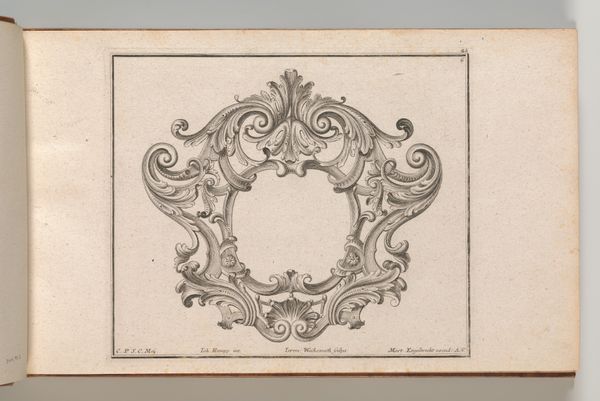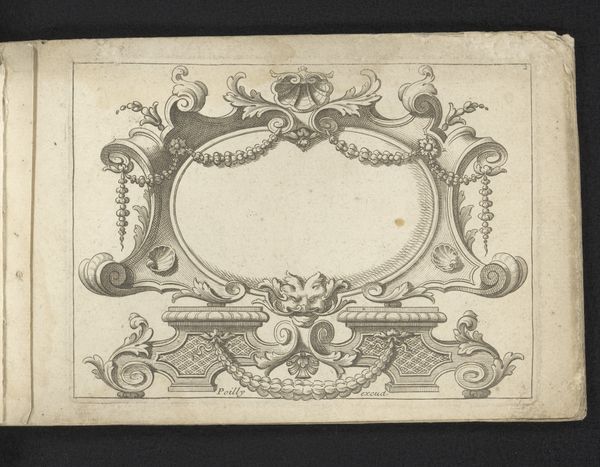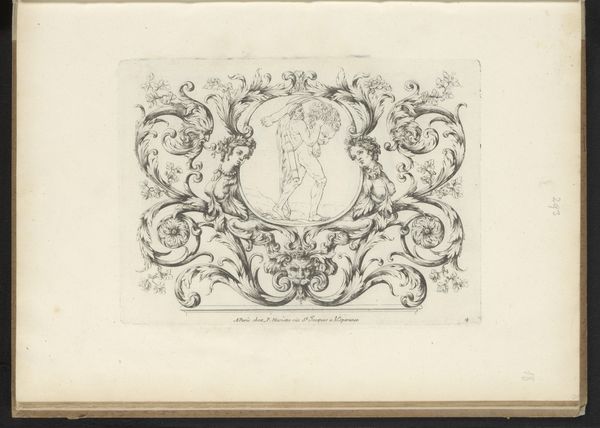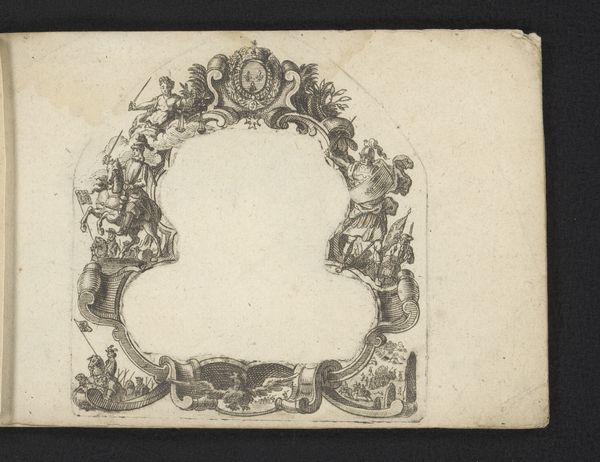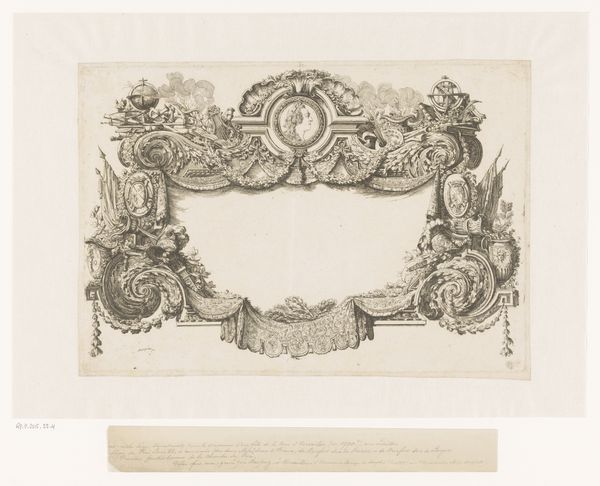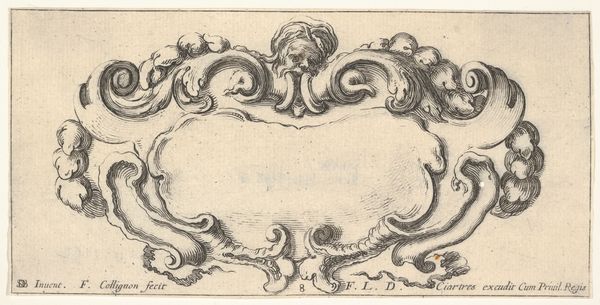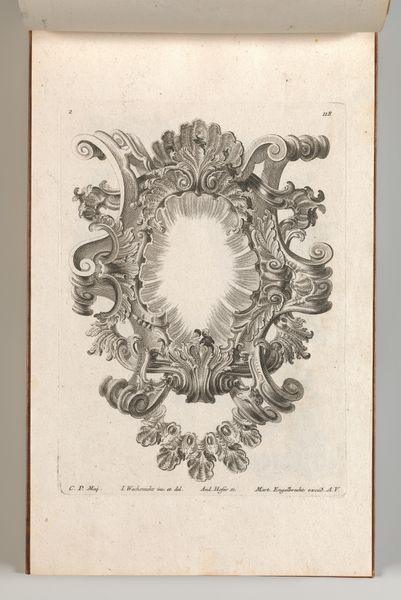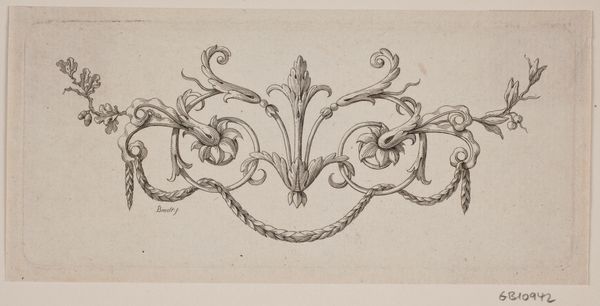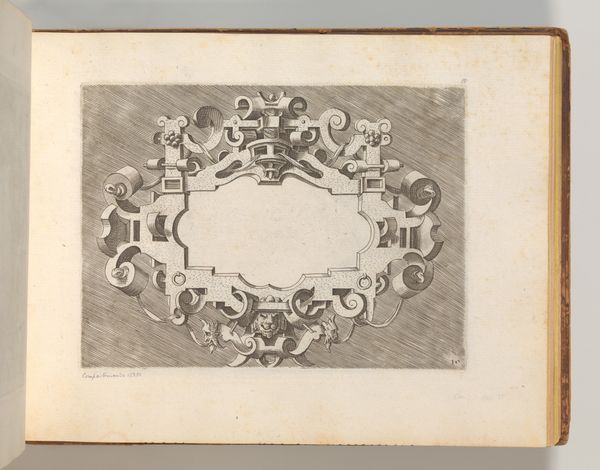
Design for a Cartouche, Plate 3 from 'Neü inventierte sehr dienstiche Schilde oder Cartouches' 1750 - 1756
0:00
0:00
drawing, graphic-art, ornament, print, etching, engraving
#
drawing
#
graphic-art
#
ornament
#
baroque
# print
#
etching
#
decorative-art
#
engraving
Dimensions: Overall: 8 7/16 × 13 3/4 in. (21.5 × 35 cm)
Copyright: Public Domain
Curator: This etching from between 1750 and 1756 is titled "Design for a Cartouche, Plate 3 from 'Neü inventierte sehr dienstiche Schilde oder Cartouches,'" crafted by Jeremias Wachsmuth. You can currently find it at the Metropolitan Museum of Art. What's catching your eye initially? Editor: It looks like a fancy picture frame throwing a baroque party! It's got such a swirling, almost excessive, quality to it. It feels lighter than you might expect given the density of the ornamentation, but there's also a feeling of constraint. What are your thoughts on its impact? Curator: Well, cartouches, like this, historically signified power, authority, and the legitimation of ruling classes. Wachsmuth's design here engages with the decorative language prevalent in Baroque art, which often visually represented the social hierarchies of the time. So that sense of restraint you felt might stem from this inherent formalism of these signifiers of dominance. Editor: Constraint is definitely the feeling! Even with all those flourishes and the details, it’s ultimately this sort of beautiful cage. The ornamentation’s intricate, almost dizzying; there's this tension between wanting to celebrate the craft, the *art*, of the design, and feeling somewhat distanced by its original purpose. What's it say to us today then, looking back at that Baroque bravado? Curator: I think re-evaluating these kinds of designs forces us to acknowledge that artistic beauty often existed in conjunction with social and political power structures that weren’t, and aren't always beautiful. The Baroque aesthetic isn't a vacuum –it served those who benefitted from inequality. How we respond to it today invites a vital contemporary discussion. Editor: Exactly, it forces a reflection, like holding up a very ornate mirror. It reminds you that every decorative flourish also tells a deeper story—one of privilege, display, and, yes, perhaps even a touch of gorgeous oppression. So next time I want a gilded cage…maybe I’ll just paint a regular one.
Comments
No comments
Be the first to comment and join the conversation on the ultimate creative platform.

